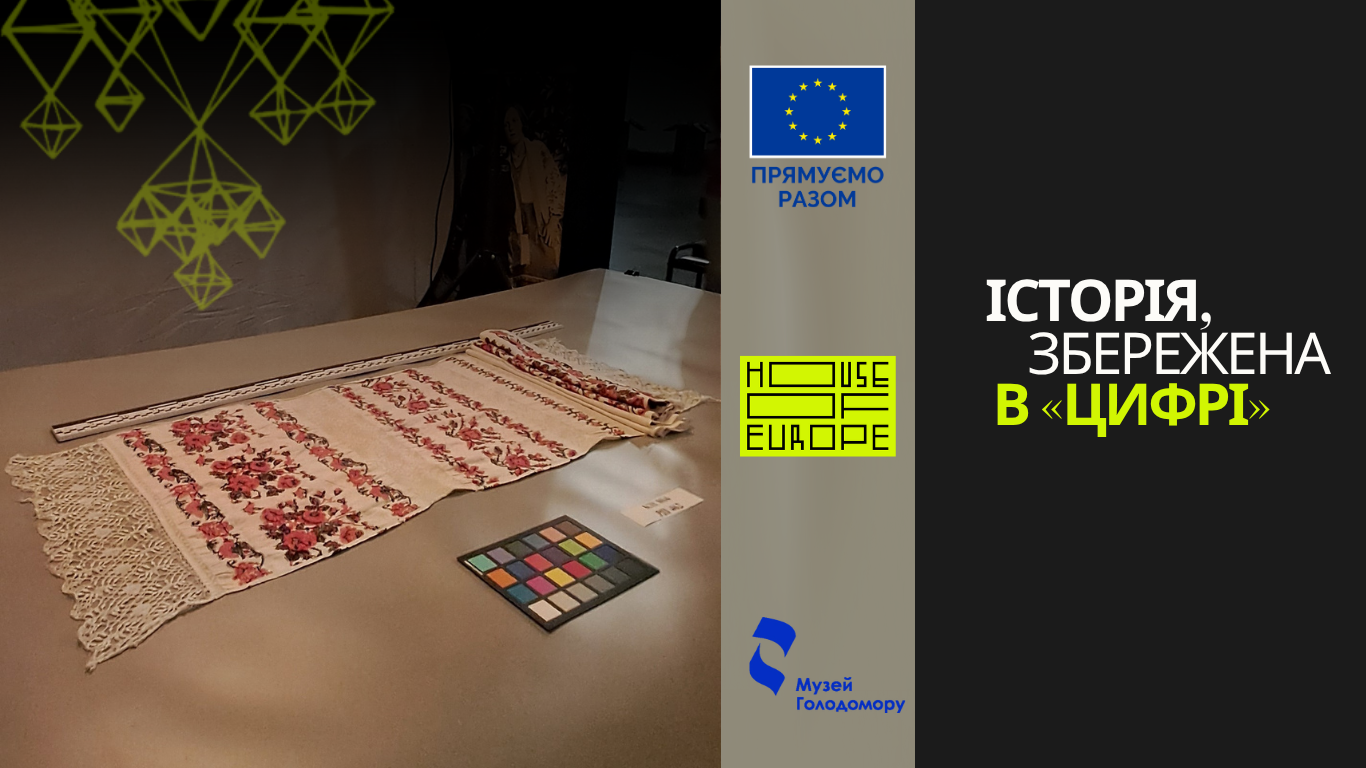Museum collection of clothes and towels digitised
Dear friends, we continue our ongoing work as part of the History Preserved in Digital Format project! This time, we are focusing on digitising fabric products that Ukrainians used in everyday life.
These museum items are not just household things. Each towel and piece of clothing preserves the family memory of the events of the Holodomor and allows us to understand how people survived the genocide committed by the Soviet communist regime. These things bear deep symbols, family stories, and the indomitable Ukrainian soul that has survived all the trials.
During the Holodomor of 1932-1933, fabric products used in everyday life acquired a special significance, as they served as an object of exchange in times of survival. A shirt, a towel, or even a piece of cloth exchanged for a handful of grain or a potato could save a person or a family from starvation. These items have become valuable to our museum because we use them to communicate with our visitors, narrating the story of the Holodomor based on the personal experiences of the families who donated these artefacts to the museum.
Particularly, our collection contains an embroidered towel that belonged to the family of Oleksii Voblyi, a saviour during the Holodomor who lived in Piskoshyne village, Zaporizhzhia region, in 1932-1933. He taught at a local school, where he organised a canteen during the Holodomor on his own and, along with his wife, took care of orphans whose parents died of starvation. Thanks to the teacher’s efforts, all the children in the village survived the Holodomor. Now we have a digital copy of the wedding towel of Mariia and Oleksii Voblyi, which was given to us by their grandson Oleksii Voblyi Jr. This towel is over 100 years old: the family did not exchange it during the Holodomor and kept it carefully all this time.
The digitisation of such valuable exhibits allows us to document the tiniest details and fabric features that can tell us a lot about the life of Ukrainians at that time. Thanks to modern technology, we are creating digital copies to provide access to these items for researchers and anyone interested.
The History Preserved in Digital Format project is supported by the European Union under the House of Europe programme. Stay tuned to learn more about the project implementation!
